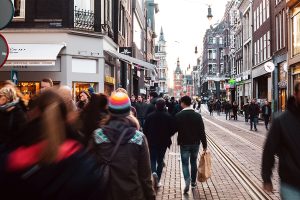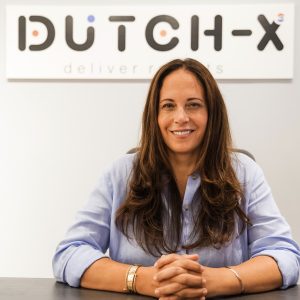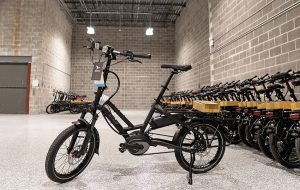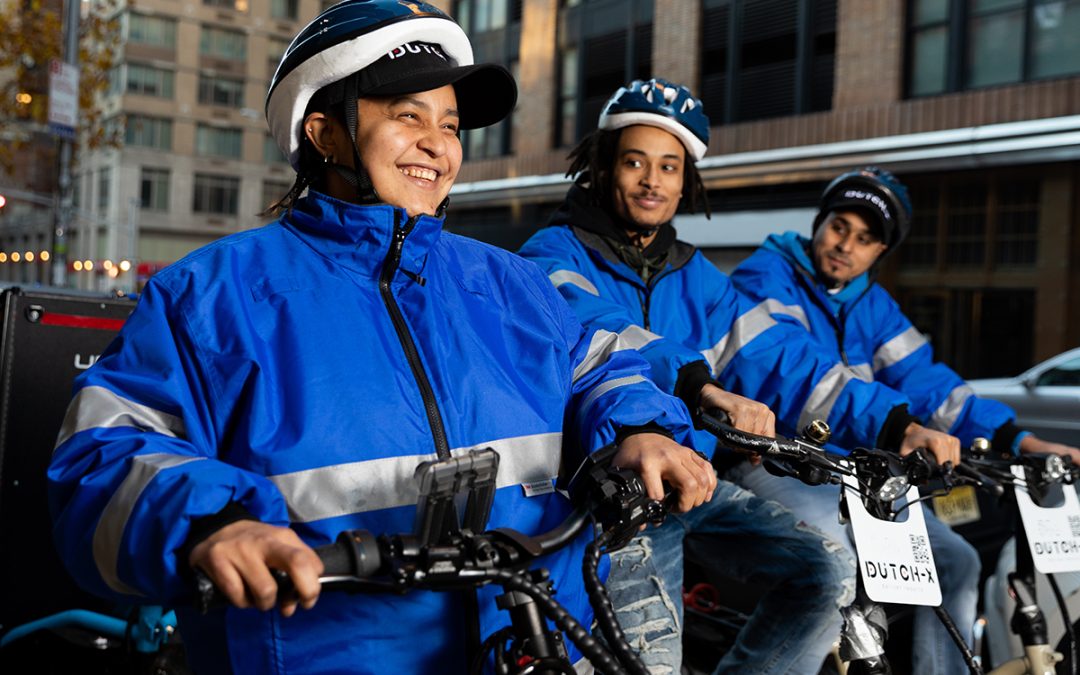There’s a revolution happening in Europe as cities convert car-clogged streets and downtown districts to car-free thoroughfares designed around bicyclists and pedestrians. This movement is transforming the look and feel of cities to rave reviews, while reducing air pollution and creating new ways to deliver people and parcels.
The wheels of commerce are still turning in these cities despite the new restrictions, which often face resistance when first proposed. From Oslo and Madrid to Paris and Amsterdam, bikes and small-scale electric delivery vehicles are now sharing the roads with pedestrians—and doing it at a quieter, more human-friendly scale.
Based on learnings from international travels and their roots in the Netherlands, a husband-and-wife duo hopes to be a small part of a similar transformation in the United States by building a bike-based delivery fleet in New York City that’s grown to be the largest self-owned e-bike delivery company in the country.

Dutch-X’s founders built a more human-scale delivery model that’s informed by Europe’s many car-free zones.
Originally called Dutch Express, the company has grown and evolved throughout its 10-year history with a fleet of W2-level employees rather than the independent contractors used by DoorDash, Grubhub and Uber Eats. Its client base includes restaurants, caterers, grocers and retailers.
Dutch-X co-founders Marcus Hoed and Ariella Azogui believe their fleet of hundreds of delivery associates on electric cargo bikes is a better fit for large catering and grocery orders that tend to be delivered by passenger cars or vans.
The company directly competes with Relay Delivery’s fleet, but its founders also believe their business model could teach contractor-based delivery services a thing or two, while improving the famously chaotic New York City street environment, as well.
Beyond the Fashion District

Co-founder Ariella Azogui
Hoed and Azogui have a background in the fashion industry and were struck—as customers—by the inherent inefficiency of low-tech courier services where deliveries were not reliable. In that era, cross-town deliveries often “weren’t trackable and traceable, and nobody had any idea when it was delivered,” Hoed said.
After investigating the market and poring over research from the likes of Boston Consulting Group, the pair elected to build a new company focusing on business-to-business deliveries with a fleet of W2-based delivery associates—a heated topic, especially in California, where popular delivery providers lobbied to keep their drivers classified as independent contractors by the state.
Like most delivery businesses, the pandemic brought a huge surge of business to Dutch-X, which accelerated the company’s growth, ultimately bringing more grocery and restaurant orders onto the platform.
The company saw huge shifts in its client demand over the last few years. Groceries now comprise approximately 70 percent of its order mix, with about another 25 percent coming from restaurants and the remaining 5 percent coming from retailers.
Because its riders use electric cargo bikes, Dutch-X’s can complete more deliveries per hour than typical car-based solutions, and claims to provide its service at a lower cost for clients and end users.
Over time, the company has found that sending 6-7 orders with a single driver is the right balance between speed, efficiency and product quality upon delivery. That batching, they stressed, is crucial for keeping its individual delivery costs as low as possible.
The company’s clients include a lot of independent operators like Eataly, Citarella fish markets and Breads Bakery, but also includes Amazon—its biggest fish to date. At present, Dutch-X isn’t delivering individual meals, but that idea isn’t off the table as the company scales and enters new markets.
“We’ve become more interesting for companies like Breads, because we are charging them a flat fee and don’t charge them anything additional,” Hoed said.
He added that he sees “synergies” between Dutch-X and the biggest third-party delivery providers beyond lower delivery costs. The company tries to keep the same delivery associates working with specific clients, and its internal and client ratings also help its riders steadily improve their performance as the deliveries add up.
Hoed estimates that its delivery associates are currently taking approximately 155,000 vehicles off New York roads every year, which equates to approximately 2 million driving hours per year. By 2025, the company hopes to be fully carbon neutral, through a combination of e-bike and foot-based deliveries.
The burrito-to-bike ratio

Dutch-X owns and maintains its electric bike fleet.
Azogui said Dutch-X properly classifies its workers compared to platforms based on independent contractors. She stressed that distinction is critical for the company to attract and retain higher-skilled employees.
In addition, the company has rolled out daily pay for its riders, and will soon roll out a new proprietary app called Zadar that allows associates to manage their shifts and benefits with minimal hassle.
“We have to do everything we can to make them feel great within our company,” she said, adding that includes owning and maintaining its fleet of Tern e-bikes for its employees.
The company plans to begin operations in Philadelphia sometime in January, and its founders are also exploring one-off partnerships where its bike-based service could be a better fit than more traditional delivery methods.
However that expansion shakes out, the founders do not expect pandemic-driven consumer habits to revert to previous norms. As some of the froth of delivery’s explosive growth subsides, they predict focusing on W2 employees and a focus on bikes, rather than cars, will prove more sustainable and attractive over the long haul.
“It’s very costly and expensive to send one burrito with a [single] driver,” Azogui said. “We found that it makes much more economical sense to aggregate more than just one order, actually between six or seven orders with the right routing to send it all to the same area, which eventually will bring the cost down. We’ll be much more efficient and this is something we can do much better with bikes than cars.”


